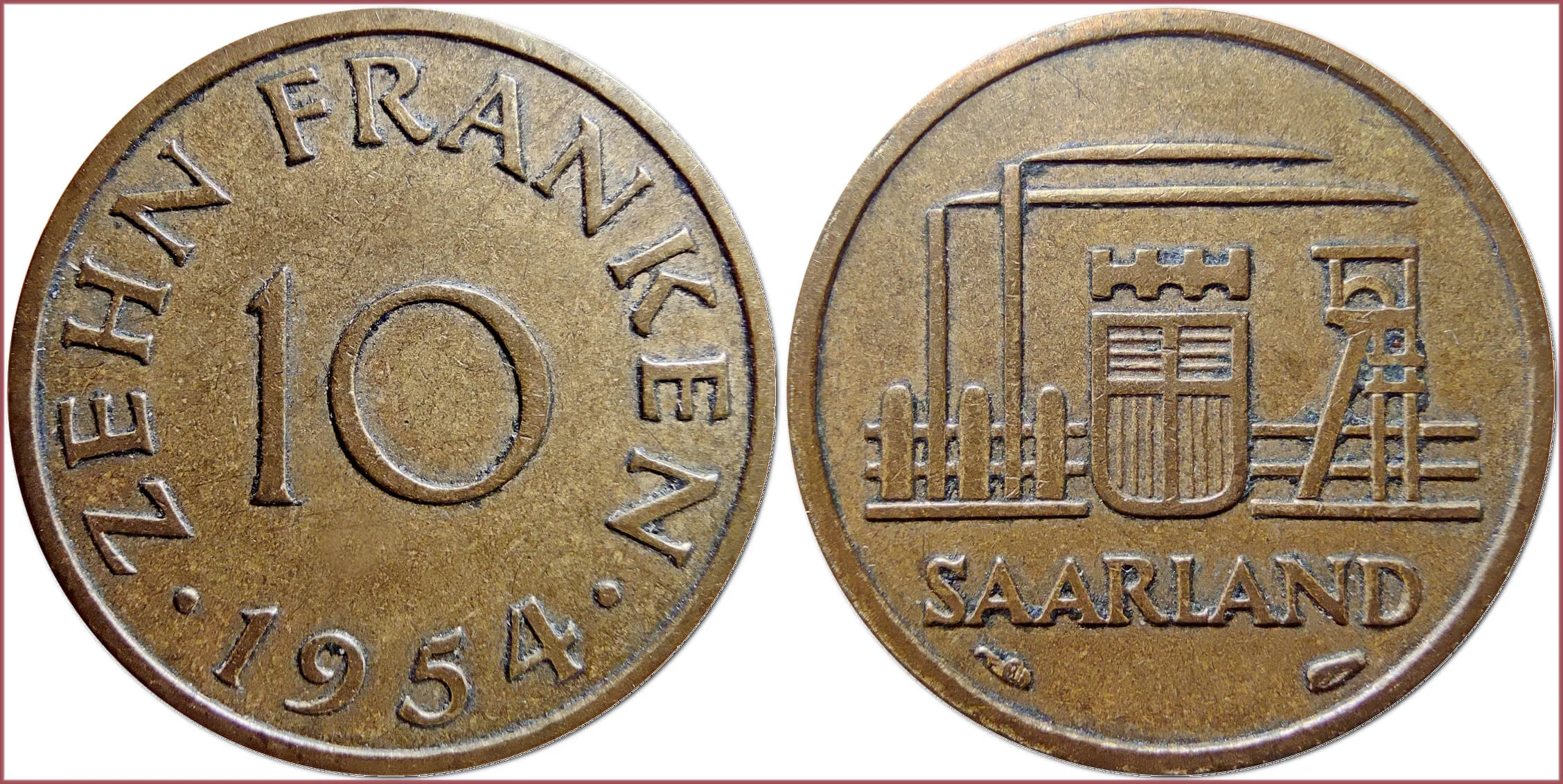FRANKEN: COIN OF SAARLAND
10 franken, 1954: Saar Protectorate (Saarland)
Saarland was a French protectorate during 1947-1956. Today, it corresponds territorially to the German federal state of Saarland.
Historically, this is an area inhabited by ethnic Germans. However, from the 18th century, the Saar was occupied by the French several times. Finally, in 1955, a referendum was held to declare independence, which rejected the proposal. The Saar eventually became part of Germany.
ZEHN FRANKEN, 1954: ten franken, 1954.
SAARLAND.
Coat of arms of Saar Protectorate on the background of an industrial scene (Saarland, next to the Ruhr region, are the main centers of mining and metallurgy with large deposits of coal and minerals).
Paris Mint (Monnaie de Paris, France).
Mint mark "cornucopia" and privy mark "wing" (Lucien Georges Bazor — Chief Engraver at the Paris Mint during 1930-1958).
Coin design: Theo Siegle (German sculptor and medalist).
Mintage: 11.000.000.
- Aluminium-bronze: 20 mm - 3 g
- Reference price: 2.5$
COIN FRANKEN — WHERE & WHEN (coins catalog: by names & emitents)
- SAAR PROTECTORATE (1954-1955): franken = French franc
FRANKEN as coin name. During 1946-1956, the modern federal state of the Federal Republic of Germany Saar was under the protectorate of neighboring France. In the mentioned period, the Saar franc, equal in value to the French franc, was used as money in this territory (in fact, it was not an independent currency, but only a type of French monetary unit). 1954-1955 dated standard coins for circulation of the Saar Protectorate: 10, 20, 50 and 100 francs. Although these were formally French francs, they were denominated in German in the format "franken". Therefore, in world numismatics, these coins are represented by the coin denomination franken.
I would like to note that in numismatic catalogs you can find three variants of similar coin names: franc (French-speaking issuers), franken (German-speaking territories) and frank (Canton of Bern; Switzerland). However, the last version of writing is probably correct to be attributed to franken coins.











